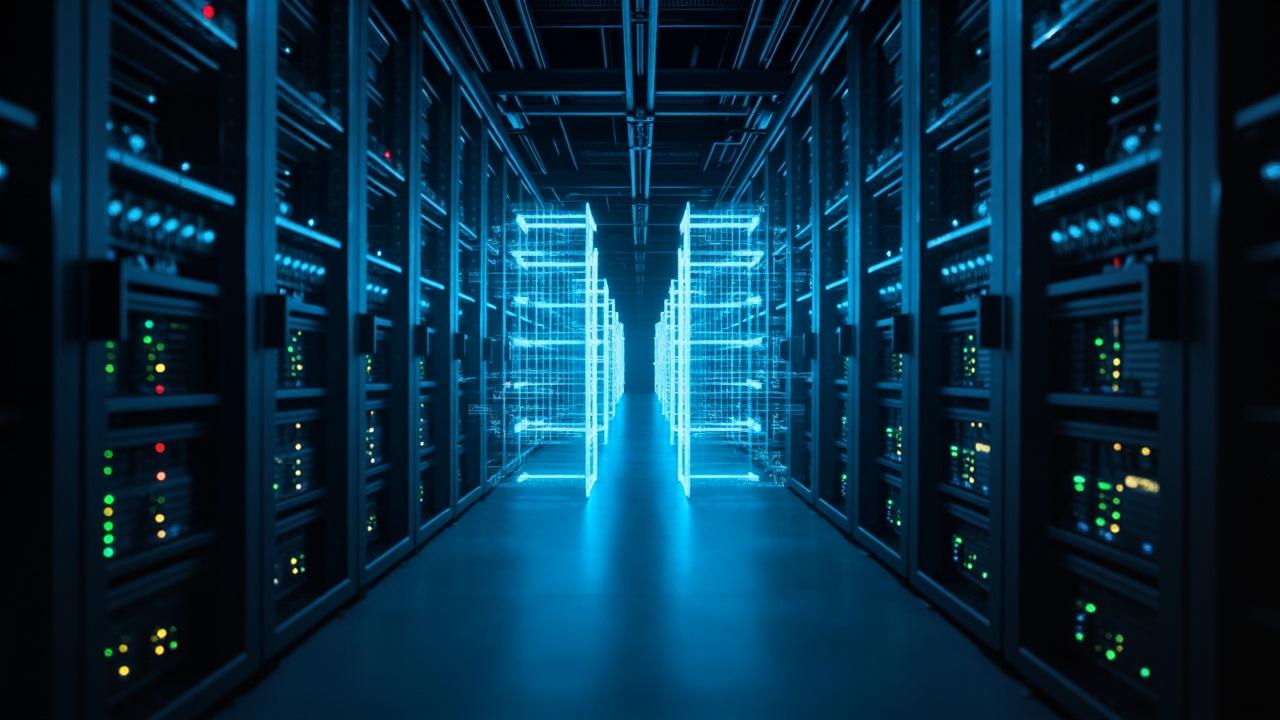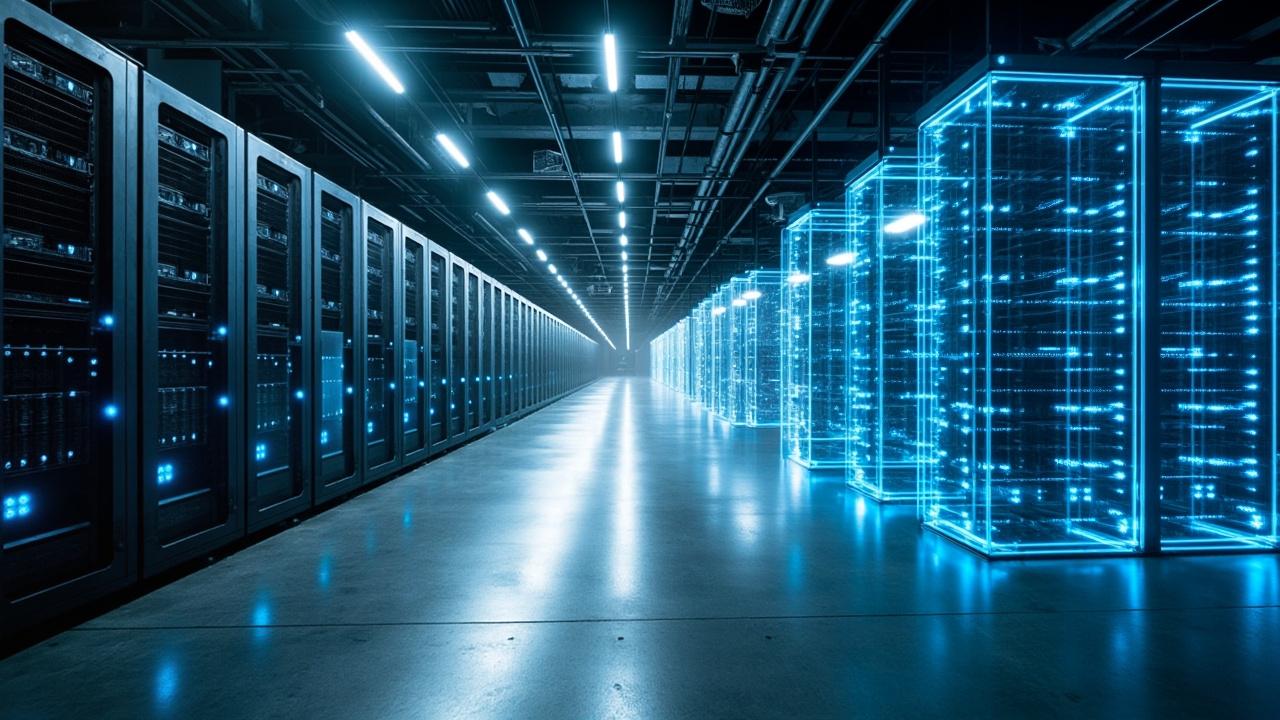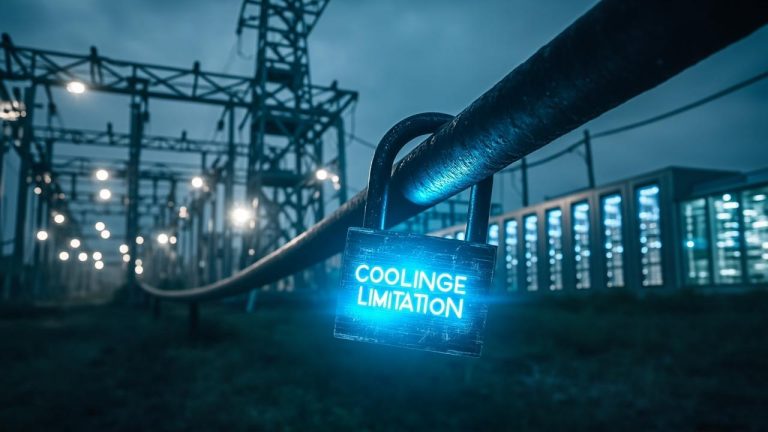Understanding the Longevity Imperative
Future proofing your data center is crucial for long-term success. In today’s rapidly evolving technological landscape, where data centers are the backbone of modern business, the lifespan of these facilities is a critical concern. Many organizations face the daunting reality that their data centers become obsolete far sooner than anticipated, leading to costly and disruptive overhauls. Industry experts estimate that premature upgrades and replacements can inflate expenses by millions of dollars.
The pressure to keep up with ever-increasing demands and new technologies often forces companies into frequent and expensive data center renovations. Beyond the significant capital expenditure (CAPEX) involved in these upgrades, operational expenses (OPEX) also skyrocket due to increased energy consumption and maintenance needs of older, less efficient equipment. Moreover, the downtime associated with these overhauls can cripple business operations, resulting in lost revenue and reputational damage.
Beyond the financial implications, there’s also a growing awareness of the environmental impact of constantly replacing data center infrastructure. The manufacturing, transportation, and disposal of electronic waste contribute significantly to carbon emissions and resource depletion. A more sustainable approach is to design and build data centers with longevity in mind, minimizing the need for frequent replacements and reducing the overall environmental footprint.
Data centers designed for the long haul offer substantial competitive advantages. By avoiding the disruption and costs associated with frequent upgrades, organizations can focus on innovation, growth, and delivering exceptional services to their customers.
Location, Location, Location
Geographic Stability and Future Considerations
Selecting the right location transcends simple real estate acquisition; it’s a strategic imperative with long-term ramifications. A seemingly attractive site might be vulnerable to natural disasters like earthquakes, floods, or hurricanes, any of which could cripple operations and result in significant financial losses. Furthermore, the increasing impact of climate change necessitates a thorough evaluation of potential risks like sea-level rise and extreme weather events.
Data centers require stable foundations, both literally and figuratively, making comprehensive risk assessments paramount. Understanding long-term climate projections and factoring those into site selection is critical for *future proofing* against environmental challenges.
Power and Connectivity: The Lifelines of Operation
Beyond geographic stability, a data center’s longevity hinges on the availability of reliable and affordable power and robust connectivity. Proximity to stable power grids is essential, alongside exploring renewable energy sources like solar or wind power. Integrating these options can significantly reduce operational costs and environmental impact.
Redundancy is also key; multiple power feeds and backup generators are crucial for ensuring uninterrupted service during outages. Equally important is proximity to major fiber optic networks and carrier-neutral facilities, offering diverse connectivity options and minimizing latency. Without reliable power and connectivity, even the most sophisticated data center will be unable to deliver on its promises.
Expansion Potential and Regulatory Landscape
Finally, long-term success demands foresight regarding expansion potential. Selecting a site with sufficient land for future growth and modular additions is vital for accommodating evolving business needs and technological advancements. Modular designs offer scalability without the upfront investment of building a larger-than-needed facility initially.
Simultaneously, navigating the regulatory landscape is crucial. Streamlined permitting processes and favorable tax incentives can significantly reduce project timelines and costs. Conducting thorough due diligence on local regulations and zoning laws is essential before committing to a particular location, ensuring a smooth and compliant path forward.
Power and Cooling
One crucial aspect is embracing advanced cooling technologies. Traditional air-cooling methods are increasingly inefficient and struggle to handle the heat densities of modern high-performance computing. Liquid cooling, where coolant is brought directly to the heat source, offers superior heat removal capabilities and can significantly reduce energy consumption.
Free cooling, which leverages ambient air or water to cool the data center, is another highly effective option in suitable climates. These approaches, along with containment strategies to isolate hot and cold aisles, dramatically improve cooling efficiency. Here are a few different options:
- Liquid Cooling
- Free Cooling
- Containment Strategies
Furthermore, optimizing power distribution is critical. Minimizing power loss throughout the system is essential. This can be achieved through the use of high-efficiency power distribution units (PDUs), minimizing cable lengths, and employing voltage optimization techniques. A key metric to monitor is Power Usage Effectiveness (PUE), which measures the ratio of total facility power to IT equipment power. Striving for a low PUE indicates a highly efficient data center.
By integrating renewable energy sources like solar or wind power, data centers can further reduce their reliance on the grid and lower their carbon footprint. Power Purchase Agreements (PPAs) with renewable energy providers can also be a viable option. Smart power management systems can then intelligently monitor and control power consumption, further optimizing energy usage across the data center. By implementing these strategies, data centers can move towards future proofing their infrastructure and reduce their carbon footprint.
Scalability and Modularity
Data centers must be agile to accommodate unforeseen advancements in technology and growth in use. Modular data center design offers unparalleled flexibility. By building in self-contained, easily replicable units, businesses can expand capacity as needed without undergoing disruptive and expensive overhauls of the entire facility.
This approach not only reduces initial capital expenditure but also allows for phased deployments, aligning investment with actual demand. Imagine adding a new wing to a building versus rebuilding the entire structure to add capacity, that’s the difference modularity offers.
Standardized infrastructure is another key element to scalability. Using consistent components, interfaces, and protocols simplifies integration and expansion. Instead of dealing with a hodgepodge of proprietary systems, standardized infrastructure enables seamless scaling and future compatibility. This means servers, storage, and networking equipment can be added or replaced with minimal disruption. This reduces the time and effort required for upgrades and also simplifies management and maintenance.

Software-Defined Infrastructure (SDI) takes scalability a step further by abstracting resources and enabling dynamic allocation. With SDI, compute, storage, and networking resources can be provisioned and managed programmatically, allowing for automated scaling in response to changing workloads. This allows for maximizing resource utilization and minimizes waste.
Proper capacity planning helps anticipate future needs and avoid bottlenecks. By carefully monitoring current usage trends and projecting future growth, organizations can proactively plan for expansion and ensure that their data center can handle increasing demands without compromising performance or reliability. This approach to capacity planning is essential for future proofing the data center and ensuring its long-term viability.
| Scalability Strategy | Benefits |
|---|---|
| Modular Design | Flexible expansion, phased deployments, reduced initial costs |
| Standardized Infrastructure | Simplified integration, easier upgrades, streamlined management |
| Software-Defined Infrastructure | Dynamic resource allocation, automated scaling, maximized utilization |
| Capacity Planning | Proactive expansion, avoids bottlenecks, ensures performance |
Redundancy and Resilience
Data centers are the heart of modern business, and any downtime can translate into significant financial losses and reputational damage. Therefore, building redundancy and resilience into every layer of the data center infrastructure is paramount. This isn’t just about having backup systems; it’s about creating a robust, self-healing environment that can withstand unexpected failures without impacting operations. Effective redundancy should be implemented across all critical components, including power, cooling, and network connectivity.
The Tier system, ranging from Tier 1 to Tier 4, offers a framework for understanding different levels of redundancy and availability. A Tier 1 data center offers basic protection against disruptions, while a Tier 4 facility provides the highest level of fault tolerance, incorporating multiple active and redundant systems to ensure continuous operation even in the face of major incidents. The appropriate Tier level will depend on the specific needs and risk tolerance of the organization.
However, when considering the long-term viability of a data center, it’s wise to aim for a higher Tier level to minimize the risks associated with unplanned downtime. In addition to Tier levels, it’s also key to implement a detailed and well-tested disaster recovery plan. This plan should outline specific procedures for responding to various potential disruptions, including power outages, natural disasters, and cyberattacks.
Proper planning and execution of redundancy measures are crucial to future proofing your investment in the data center. Regular drills and simulations should be conducted to ensure the effectiveness of the disaster recovery plan and to identify any weaknesses in the system. A well-designed and properly maintained redundant infrastructure, coupled with a comprehensive disaster recovery plan, can provide the peace of mind that comes with knowing that your data center is prepared to handle whatever challenges may arise.
| Area | Redundancy Measures |
|---|---|
| Power | UPS systems, backup generators, multiple power feeds |
| Cooling | Redundant cooling units, chilled water storage, diverse cooling paths |
| Network | Multiple network carriers, redundant network devices, diverse network paths |
Security and Compliance
In today’s interconnected world, security and compliance are paramount for any data center striving for longevity. It’s no longer sufficient to simply house servers; a data center must actively protect the data entrusted to its care while adhering to an increasingly complex web of regulations.
This requires a multi-layered approach encompassing physical safeguards, robust cybersecurity protocols, and a deep understanding of data privacy mandates. Failure to prioritize these aspects can lead to devastating data breaches, hefty fines, and irreparable damage to an organization’s reputation, ultimately undermining the long-term viability of the data center itself.
A robust security strategy starts with the physical premises. Implementing stringent access control measures is crucial. This includes:
Beyond physical barriers, a comprehensive cybersecurity posture is essential. Firewalls, intrusion detection and prevention systems, vulnerability scanning, and regular penetration testing are all critical components. Data encryption, both in transit and at rest, is another vital layer of defense. Furthermore, organizations must stay ahead of emerging threats by continuously updating their security protocols and investing in cybersecurity awareness training for all personnel. Future proofing your data center requires constant vigilance and adaptation to the evolving threat landscape.
Navigating the labyrinth of data privacy regulations is another critical aspect of security and compliance. Regulations such as GDPR (General Data Protection Regulation) and CCPA (California Consumer Privacy Act) impose strict requirements on how organizations collect, process, and store personal data.
Compliance with these regulations requires a thorough understanding of the legal requirements, the implementation of appropriate data governance policies, and the ability to demonstrate compliance through regular audits and certifications. Achieving certifications like ISO 27001 and SOC 2 provides assurance to customers and stakeholders that the data center adheres to industry best practices for security and compliance.
Future Proofing Your Data Center
Embracing Flexibility in Design
The only constant is change, and this is especially true in the realm of technology. When designing a data center with a multi-decade lifespan in mind, rigid, inflexible designs are a recipe for obsolescence. Instead, embrace adaptability from the outset. This means considering modular designs that allow for easy swapping of components, open standards that avoid vendor lock-in, and a willingness to adopt new technologies as they emerge.
For example, consider the physical layout: can racks be easily reconfigured to accommodate different server form factors or densities? Can cooling systems be adapted to handle higher heat loads? By building in this inherent flexibility, you create a data center that can evolve alongside the technological landscape.
Planning for the AI Revolution and Beyond
Artificial intelligence (AI), machine learning (ML), and high-performance computing (HPC) are no longer futuristic concepts; they are rapidly becoming integral parts of modern business. These technologies demand significant processing power, specialized hardware (like GPUs and TPUs), and advanced cooling solutions. When planning your data center, anticipate the increasing demand for these resources.

Ensure that your power and cooling infrastructure can support high-density racks and consider incorporating liquid cooling options to manage the heat generated by AI-driven workloads. It is important to consider the physical space requirements of these newer technologies, and how that may impact the data center’s layout. By proactively addressing these needs, you’ll avoid costly retrofits down the line.
The Importance of Continuous Technology Evaluation
The pace of technological advancement shows no signs of slowing down. Processors become faster, storage becomes denser, and networking becomes more sophisticated. To ensure your data center remains competitive, establish a process for continuously evaluating new technologies and their potential impact. This includes monitoring industry trends, attending conferences, and engaging with vendors. More importantly, make sure to properly evaluate any potential technology or solution by comparing it with existing infrastructure.
Is it truly more efficient? Does it provide a tangible benefit for the bottom line? Incorporating this information into a technology roadmap will inform upgrades and investments, ensuring that your data center remains at the forefront of innovation. Thoughtful planning is critical for future proofing your infrastructure and preventing premature obsolescence.
Long-Term Management and Maintenance
A data center, much like any complex system, requires consistent and attentive care to reach its full potential lifespan. Preventative maintenance is paramount and should be considered an investment, not an expense. Scheduled inspections, component replacements based on manufacturer recommendations, and proactive cleaning can prevent minor issues from escalating into costly downtime events.
A well-defined and diligently followed preventative maintenance program extends the operational life of critical equipment, ensuring optimal performance and minimizing the risk of unexpected failures. This approach provides stability and ultimately reduces the total cost of ownership over the data center’s lifecycle.
Remote monitoring and management tools have revolutionized data center operations, offering unprecedented visibility into system performance and enabling proactive intervention. These tools provide real-time data on power consumption, temperature, humidity, and other critical parameters, allowing operators to identify potential problems before they impact operations.
Automated alerts and notifications enable rapid response to anomalies, minimizing downtime and improving overall system reliability. Furthermore, remote management capabilities enable technicians to diagnose and resolve issues remotely, reducing the need for on-site visits and improving response times, especially during off-hours.
Investing in the continuous training of data center staff is essential for maintaining a high level of operational expertise and ensuring that personnel are equipped to handle the challenges of a complex and evolving environment. Training programs should cover a wide range of topics, including preventative maintenance procedures, troubleshooting techniques, security protocols, and compliance requirements.
Staying up-to-date on the latest technologies and best practices is crucial for effective data center management. Additionally, implementing a robust lifecycle management plan for all data center assets, complete with replacement schedules and decommissioning strategies, contributes significantly to *future proofing* the facility and ensuring its long-term viability.
Conclusion
Building a data center designed to stand the test of time is no small feat, demanding careful consideration of numerous factors from site selection to security protocols. However, by prioritizing scalability, energy efficiency, robust redundancy, and adaptability, organizations can create infrastructure that not only meets current demands but is also positioned to thrive for decades to come.
The initial investment in these critical areas will yield significant long-term benefits, including reduced operational costs, minimized environmental impact, and a stronger competitive edge.
A truly durable data center is one that is prepared for the inevitable advancements in technology. This requires embracing modular designs, standardized components, and software-defined infrastructure that allows for easy integration of new technologies as they emerge. Thoughtful planning for technology upgrades as technologies continue to evolve is critical. Focusing on *future proofing* your infrastructure ensures that your data center remains relevant and efficient, avoiding costly and disruptive overhauls down the line.
Ultimately, the longevity of a data center hinges on a holistic approach that encompasses strategic planning, meticulous design, and proactive management. By investing in these key areas, organizations can create data centers that are not only reliable and secure but also sustainable and adaptable, providing a solid foundation for future growth and innovation. Contact us today to learn more about how we can help you design and build a data center that will last for decades.
Frequently Asked Questions
What does it mean to future-proof something?
To future-proof something means to anticipate and prepare for potential future challenges, changes, and advancements. It involves taking proactive steps now to ensure that something remains relevant, functional, and effective in the long run, despite inevitable shifts in the environment or context in which it exists. Essentially, it’s about building resilience and adaptability into a system or plan.
Why is future-proofing important for my business/project/life?
Future-proofing is crucial for a business, project, or life because it mitigates the risks associated with unforeseen circumstances and allows you to capitalize on emerging opportunities. By anticipating change, you can avoid obsolescence, maintain a competitive edge, and ensure the long-term sustainability of your efforts.
Without it, you risk being caught off guard and losing ground to more adaptable entities.
What are the key areas to consider when future-proofing?
Key areas to consider when future-proofing include technology, skills and knowledge, financial resources, market trends, and regulatory environments. It’s important to analyze potential disruptions and develop strategies to address them in each of these areas. Examining the broader social, political, and economic landscape can also reveal factors that may influence future outcomes and necessitate preemptive action.
How can I future-proof my technology investments?
You can future-proof technology investments by focusing on solutions that are scalable, adaptable, and based on open standards. Embrace cloud-based services and modular architectures that allow for easy upgrades and integrations. Prioritize vendor relationships that emphasize long-term support and innovation. Continuously monitor technology trends and be prepared to adapt your systems as needed.
What are some common mistakes people make when trying to future-proof?
Common mistakes when trying to future-proof include over-investing in specific technologies, failing to consider alternative scenarios, and neglecting the human element. Some assume that a single solution will solve all problems and do not allocate resources for continued learning and adaptation.
Rigid adherence to a predetermined plan, without being open to adjustment, also undermines the effectiveness of future-proofing efforts.




